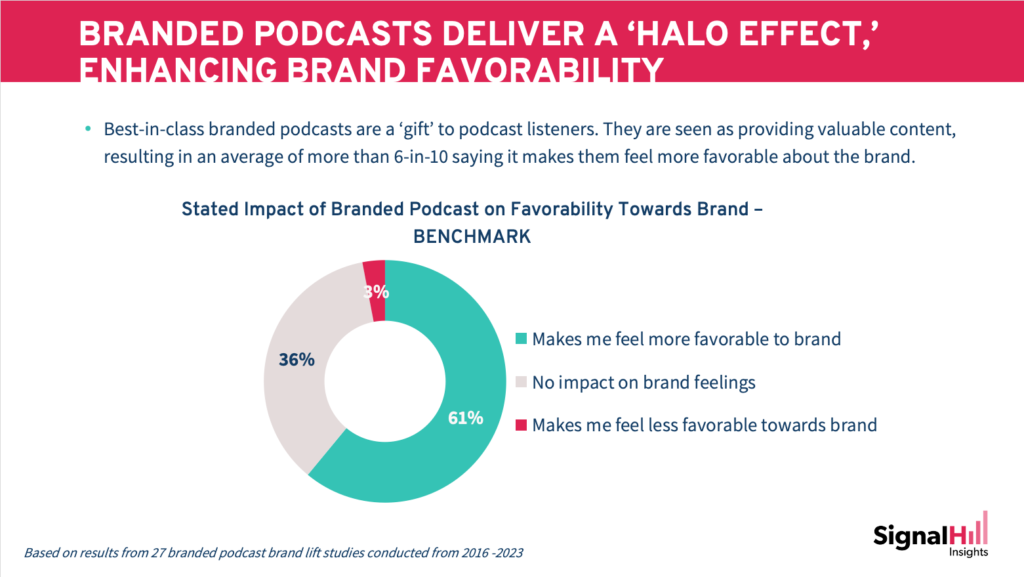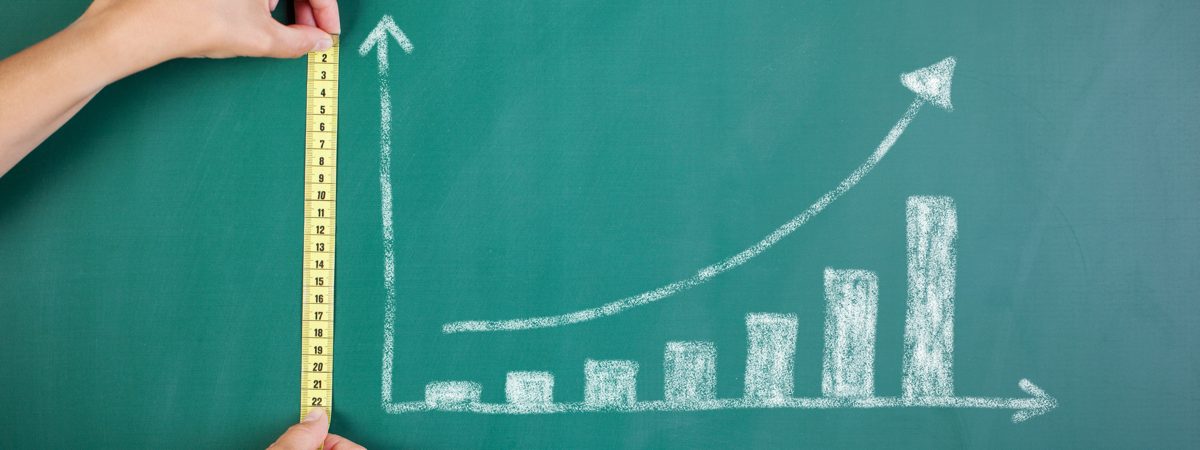We are all making data-driven decisions. And so we should be.
The key thing is choosing the most relevant measure of success. And when it comes to branded podcasts, that measure is not just downloads or impressions.
Branded podcasts are something of a unicorn in the media world. And that means they require a different approach to measurement.
What Makes Branded Podcasts Unique
Branded podcasts have been generating a bit of a buzz recently.
Why? Because branded podcasts uniquely offer an opportunity for brands to be the publisher vs. the advertiser. As Dave Beasing at Sound that Brands puts it, it’s a chance for brands to “be the content, not the interruption.” Or, in the words of thought leader Steve Pratt of The Creativity Business and co-founder of Pacific Content, a podcast of their own allows brands to “give a gift — or create a significant amount of value — for the people that the brand wants to have relationships with.” Rather than renting an audience as an advertiser, the brand owns the audience, allowing them to build their own relationships around the interests and motivations of their current and potential customers.
Unlike other types of content marketing, branded podcasts tap into podcasting’s superpower of engagement. A blog post, newsletter or glossy advertorial in a magazine will hold readers’ attention for a few minutes at best. A successful branded podcast deeply engages potential customers, minute-after-minute, episode-after-episode.
Why Most Media Measurement Fails to Capture the Value of Branded Podcasts
The basic currency used in virtually all other media – including podcasts with ads – is impressions (based, in the case of podcasts, on downloads).
When you measure a brand’s own podcast strictly by downloads or impressions, you’re barely scratching the surface of what it delivers.
All impressions are not equal. Compare the impressions delivered by a branded podcast to those from a billboard for example. One impression on a brand’s podcast often means the listener is engaged with the brand through the entire length of a podcast episode, while a billboard impression lasts just a second or two.
For this reason, a key measure of success for branded podcasts is the ability to hold its audience through an entire episode, or its ‘retention rate.’ In essence, this is the episode completion rate, available through multiple sources, including Apple’s and Spotify’s podcaster metrics, as well as YouTube’s creator studio. Retention has become a litmus test for branded podcasts — the longer the listener stays with the episode, the more time the brand holds their attention. Best-in-class podcasts for brands generate a retention rate of more than 80%, meaning that on average at least 8-in-10 listeners stay through the end of each episode.
Earlier this year, Dan Meisner of Bumper proposed an aggregate metric that helps us to account for the one-of-a-kind value of branded podcasts. Still very much a manual approach, Dan scrapes available listener retention data, multiplies that by episode duration, and again by downloads or views. The result is “Listen Time,” which tells us the total number of minutes the audience has spent with a podcast. Applied to a brand’s own podcast, Listen Time expands on impressions to provide a more complete and accurate measure, taking into account attention and time spent with the brand.
Brand Lift Studies Help to Paint the Full Picture of a Successful Branded Podcast
Celebrating Dan’s Listen Time metric in a recent post, Signal Hill’s Paul Riismandel mentioned brand lift studies as an additive tool to capture the impact on your brand from the attention paid to a podcast.
Having conducted dozens of research surveys on branded podcasts, we’ve seen plenty of evidence of how deep listener engagement with a brand’s own podcast can deliver considerable upper and mid-funnel value: building familiarity, favorability, consideration and shaping brand perceptions.
We also get a measure of the ability of branded podcasts to retain an audience, not only throughout an episode, but from episode-to-episode. After listening to a full episode, an average of 33% of listeners to the branded podcasts we’ve tested say they would ‘definitely’ listen to another episode. We’ve seen top-performing podcasts score as high as 57% of listeners saying they would ‘definitely’ listen again.
Even a single exposure to a full episode of a branded podcast can go a long way towards winning the hearts and minds of listeners. Applying the benchmark average from our controlled exposure studies, 61% of listeners said the podcast they listened to made them feel more favorable towards the brand

How Can You Tell If Your Branded Podcast is Delivering the Goods?
As easy as they may be to count, your yardsticks need to go well beyond downloads.
Here are three steps to give you a more complete and meaningful measure of success for your branded podcast.
- Check the retention rate. This data, available through multiple sources, confirms that your podcast is not only getting downloads but holding the audience throughout each episode, in effect maximizing the time spent with your brand.
- Calculate your ‘Listen Time’. This aggregate measure gives you a full accounting of attention and time spent with your brand through your brand’s podcast, by combining retention rate, episode duration and downloads.
- Finally, consider including a brand lift study in the budget for your branded podcast. A brand lift study measures how the podcast affects a listener’s perception of a brand. and confirms that you’re moving the needle on your podcast objectives. This takes you from accounting for the time listeners spent with your brand to understanding the actual impact of the content. The method can also give you insight on how listeners feel about your podcast, helping you optimize the content for future seasons.




